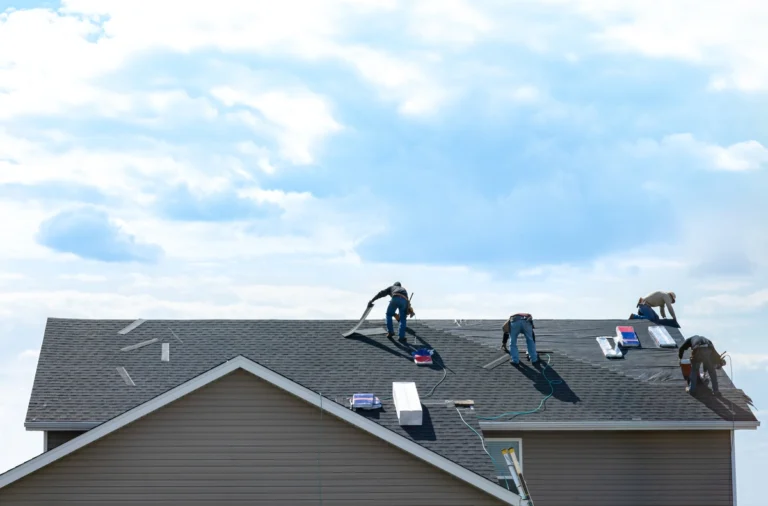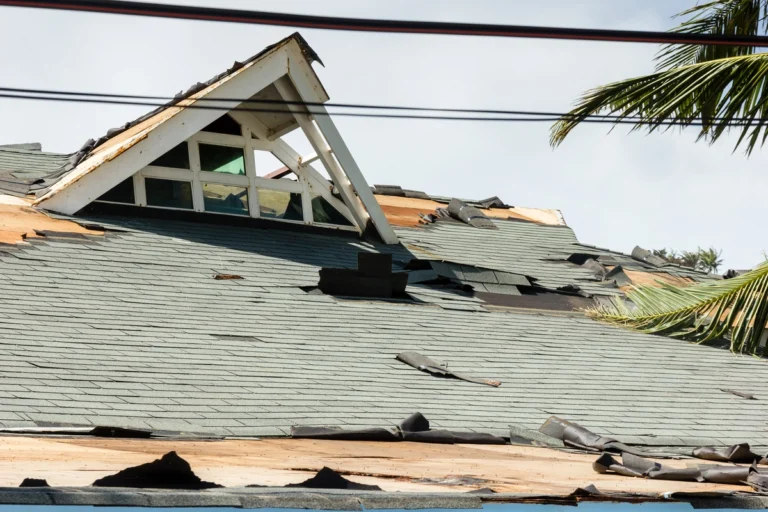When building a new roof, one of the most important considerations is the size and type of plywood used for the roof sheathing. The roof sheathing is the material that sits on top of the rafters and provides a surface for contractors to apply roofing materials.
Choosing the right size of plywood for your roof can be the difference between installing a robust and durable roof that lasts for decades and one prone to leaks and other problems.
This blog post will discuss the factors to consider when choosing what size plywood for roofing is appropriate, including the type of materials, rafter spacing, and roof loads. We’ll also provide recommendations for the recommended plywood thickness for different types of roofs and tips on how to install plywood properly.
Factors to Consider When Choosing Plywood for Roofing

When choosing the right size of plywood for your roof, there are a few essential factors to consider. The first is the type of plywood sheets you will be using. The most common types of plywood used for roof sheathing are oriented strand board (OSB) and CDX plywood.
Oriented strand board is made from compressed wood strand board, while CDX plywood is thin sheets of wood veneer glued together. Both OSB and CDX plywood have pros and cons; the best choice will depend on your specific roofing needs.
Another vital factor to consider is the rafter spacing of your roof. The rafter spacing is the distance between the center of one rafter to the center of the next rafter. The greater the rafter spacing, the thicker the plywood should be to ensure proper support for the roof.
The roof loads, or the weight the roof can support, also play an essential role in determining the proper thickness of your plywood. If your roof supports heavy loads, such as a metal roof or additional insulation, you will need to use thicker plywood or strand board to ensure appropriate support.
Lastly, the size of your roof, measured in square footage, will also affect what size plywood you’ll need for roofing and how much you should get. The larger the roof, the more plywood you will need to cover the entire surface. Considering these factors, you can ensure that you are using the right size of plywood to adequately support and protect your roof.
Recommended Plywood Thickness for Different Types of Roofs
The recommended thickness for your roof depends on the materials you are using and the roof’s slope. For example, an ideal thickness for roofing plywood is at least 5/8 inches for a standard asphalt shingles roof. This standard thickness provides enough support for the weight of the shingles and the typical loads a residential roof should expect.
For a metal roof, you should use thicker plywood, usually a minimum thickness of 3/4 inches. This is because metal roofs are generally heavier than asphalt shingle roofs and require more support to prevent sagging and warping.
For a low-slope roof, the recommended roof sheathing thickness is also 3/4 inch. Low-slope roofs are more prone to water pooling. A thicker sheathing plywood will provide extra protection against water damage.
It is important to note that the recommendations above are general guidelines and that the best way to determine the actual thickness you need is with a professional or the manufacturer’s specifications. Additionally, consider the right sheathing thickness to ensure adequate protection if you live in a region with heavy snow loads or high winds.
Tips for Installing Plywood

Installing roofing plywood is crucial in ensuring a solid and durable roof. Here are a few tips to keep in mind when installing plywood for your roof:
Proper Alignment and Spacing Between Sheets
Proper alignment and spacing between plywood sheets are essential when installing roofing plywood. Well-laid plywood ensures that the roof is structurally sound and that there are no gaps or overlaps in the plywood.
When you align the sheets correctly, the edges of each sheet fit together seamlessly, providing a smooth surface to apply the roofing material. This creates a strong and stable base for the roof, helping to prevent leaks and other problems.
Use the Correct Roof Decking
Using the correct roof decking ensures that support your roof appropriately and that there are no weak spots in the roof, which can lead to leaks and other problems. It is also essential to use a high-quality roof deck, as low-quality or inappropriate roof deck can lead to failure or damage over time, costing you more in the long run.
Ensure the Correct Sheathing Thickness
Using the correct sheathing thickness is crucial for the roof’s structural integrity. If the sheathing is too thin, you may need to provide more support for the roofing material, as a lack of support can lead to warping or sagging roofs. On the other hand, sheathing that is too thick may not be necessary.
Use High-quality Fasteners
High-quality fasteners are typically durable materials, such as stainless steel or hot-dip galvanized steel. These materials can withstand the elements and provide a strong and secure connection between the plywood and the roof decks. These fasteners also have a better resistance to rust and corrosion, which is vital for the roof’s longevity.
Consider Hiring a Professional

Installing plywood on roofs can be a complex and challenging task. If you are not comfortable with the process, it is best to consider hiring a professional. This will help to ensure that the roof installation is correct and structurally sound. If you’re planning on installing the roof yourself, following these tips is another way to help ensure a quality roof.
Conclusion
Choosing the right size of plywood for your new roof build is essential in ensuring a solid and durable roof. Proper roof sheathing is crucial in protecting your home from the elements and ensuring the structural integrity of your roof. You must consider factors such as roofing material, rafter spacing, roof load, and square feet when determining the appropriate plywood thickness.
It’s also important to follow the manufacturer’s specifications and the guidelines for the recommended plywood thickness. Additionally, proper installation of the plywood is crucial to the longevity of the roof and its ability to withstand the elements. By following these tips and guidelines, you can be sure that you are building your new roof to last.





